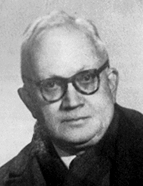

With remarkable subtlety, the scholar delved into the meaning of important things and words, such as Maghrebi alambels (hambels). What he found serves as a starting point for explaining the general network of Portuguese trade centred on North Africa in various respects (Études, pp. 84-88). Not to mention other goods that circulated, such as fabrics, horses, fruit, wheat, etc. He undoubtedly made an essential contribution to understanding and explaining the Portuguese expansion from the Portuguese-Spanish-Moroccan Gulf to Guinea (without forgetting Arguim and Mina). An Atlantic area where the slave and gold trades, essential for the construction of the Portuguese African empire, were later established. So much so that Berberia and Guinea resemble a "solidarity bloc". This also includes the islands (Madeira, the Azores and the Canary Islands), Andalusia (Cádiz, Málaga, Puerto de Santa María and Jerez de la Frontera) and the western Mediterranean through the Genoese maritime trade network. In the 1930s, Portuguese research on Morocco was still centred on discussing the military and political aspects of the conquest — although David Lopes had already made a notable contribution. Much less were other aspects mentioned, particularly the economic one. It was then that Robert Ricard presented his succinct and well-founded vision of the presence in the Maghreb within the framework of the Portuguese domains and presence in Africa. Everything that ultimately shows "the coherence, the tenacious, multiform and almost implacable continuity of what can well be called Portuguese imperialism." (Études, p. 104). The procedures for evangelising indigenous people and the Moorish deserved enlightening pages. Although they cannot be confused. However, it's about saving people from spiritual death, because the other type of death, the physical one, doesn't wait (Études et documents..., p. 210). Robert Ricard pays special attention to figures of converts who go unnoticed in Portuguese histories, such as those he calls Moroccan martyrs, Gonçalo Vaz and João Vaz, who turn from Muslims to Catholics only to perish in barbaric suffering when they are caught by their homeland — because they refuse to renounce their chosen faith. Or the enquiry into the acceptance of a Christian bishop in Muslim Lisbon in 1147. It follows that we cannot think of a Christian community organised and led by a bishop. And so, he moved away from Herculano and closer to Fr. Luís Gonzaga de Azevedo (Études d’histoires..., p. 41). Literature and history, firmly rooted in scholarly research, are consistently present throughout all studies, but Robert Ricard, a rare master of the sources, excels in articulating and addressing questions through the extensive range of data he is able to compile. He used comparisons to establish solid conclusions. Robert Ricard's knowledge of the history of the Portuguese in Morocco was largely used by Joel Serrão in the Dicionário de História de Portugal [Dictionary of Portuguese History] and entrusted him with the writing of several entries in his well-known field of research.
This work is financed by national funds through FCT - Foundation for Science and Technology, I.P, in the scope of the projects UIDB/04311/2020 and UIDP/04311/2020.
